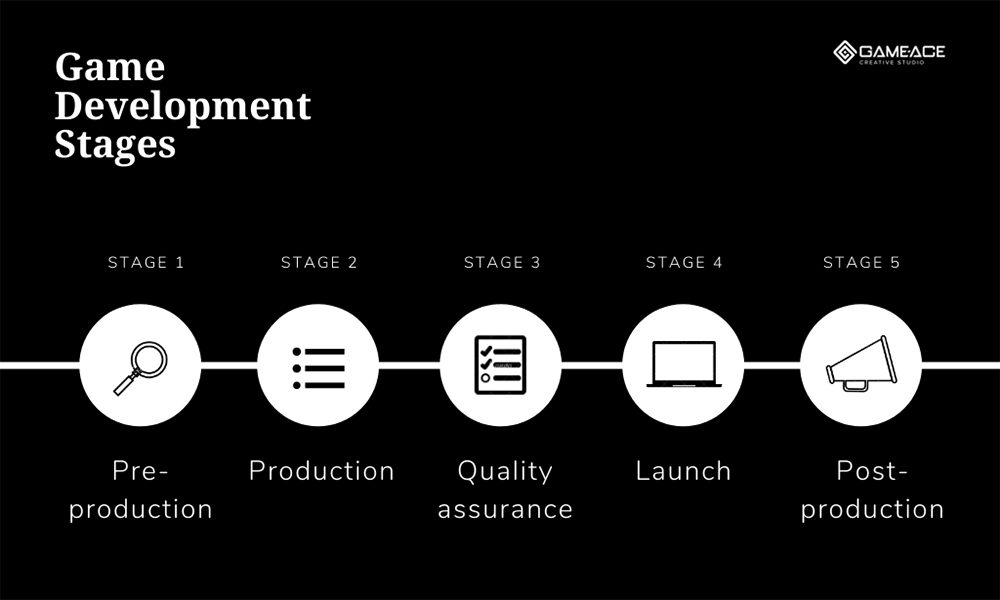Game development involves a complex and intensive process that requires the collaboration of various professionals to create an enjoyable and immersive gaming experience. The process involves several stages, namely pre-production, production, and release and marketing. Pre-production involves the development of game ideas, concept art, storyboarding, and early prototyping to create a solid foundation for the development process. The production stage involves creating a functional and enjoyable game that meets the standards set in pre-production. This stage requires specialized teams to work together, including programming, art and animation, and sound design. The final stage is release and marketing where the game goes through the certification process and promotion to the public.
Introduction
Game development is a complex and intensive process that involves the collaboration of various professionals working together to create an enjoyable and immersive gaming experience. From the inception of the concept to the final release of the game, game development requires several steps that must be taken to ensure a satisfying end product. The creative process of game development gives us an insight into the behind-the-scenes work that goes into making games. In this article, we will discuss the various stages of game development and the creative process behind them.
Pre-Production
The first stage of game development is pre-production. This is the phase where the idea for the game is developed, and the team starts to formulate a plan for how the game will look and play. The pre-production phase typically consists of concept art, storyboarding, and early prototyping. The goal of pre-production is to determine whether the game is viable and to create a solid foundation for the rest of the development process.
Concept Art
Concept art is the art created to explore and develop the visual look and feel of the game. It involves exploring different themes, styles, and visual elements that will give the game a unique identity. Concept artists are responsible for creating the game’s initial character designs, environments, landscapes, and scenery. The concept art is essential as it helps the entire team visualize what the final game will look like.
Storyboarding
After creating the concept art, the next step in pre-production is Storyboarding. Storyboarding involves creating a visual representation of the game’s storyline, characters, and levels through illustrations. This process helps the team flesh out their ideas and identify any potential problems before moving forward with development.
Early Prototyping
The final stage of pre-production is early prototyping. This involves creating a playable prototype of the game, which will give the team an idea of how the game will play and identify any design issues early on. The early prototype can be a basic game mechanic or a simple level. By testing the game at this early stage, the team can identify what works and what doesn’t before dedicating more resources to the project.
Production
The second stage of game development is production. This is the stage where the game is built, and all the assets come together. The goal of production is to create a functional and enjoyable game that meets the standards set in pre-production. The production stage is extensive and requires various specialized teams to work together.
Programming
The programming team is responsible for creating the game’s code, which controls the mechanics of the game. They develop the game engine, artificial intelligence, and physics systems. The programming team works hand in hand with other teams to ensure that every game element works correctly and integrates seamlessly into the game.
Art and Animation
The art and animation team is responsible for creating all the visual elements of the game, as outlined in the concept art. They create the game’s characters, environments, and special effects. The art team is also responsible for creating textures that give the game its visual depth and personality. Animators bring static graphics to life by creating motion for the characters and objects in the game.
Sound Design
Sound designers are responsible for creating the game’s audio elements. They create sound effects, music, and recordings that will be used throughout the game. The sound design team works closely with the art and programming teams to ensure that the sounds fit with the game’s visuals and mechanics.
Testing and Quality Assurance
Testing and quality assurance are critical parts of the game development process. This stage involves testing the game repeatedly to detect and fix any flaws, glitches, or bugs. Testing is typically done in-house, where the team uses specialized software to test the game. This process helps ensure the game’s quality and that it runs correctly on all platforms.
Release and Marketing
The final stage of game development is the release and marketing phase. Once the game is complete, it goes through the certification process with various platforms, including consoles and mobile devices. The marketing team develops a strategy for promoting and advertising the game.
Conclusion
Game development is an exciting and challenging process that requires a team effort to create a successful game. The creative process of game development involves pre-production, production, and release and marketing stages. Each stage is critical to the final game’s success and requires specialized skills to execute successfully. Understanding the behind-the-scenes work that goes into making games can deepen our appreciation for the art form and give us insight into the challenges faced by game developers.
